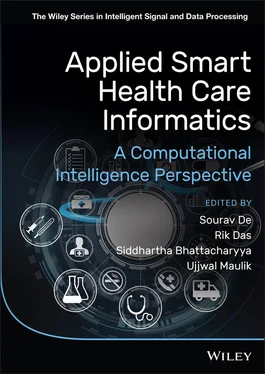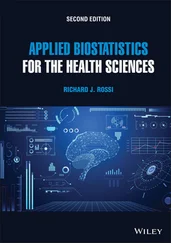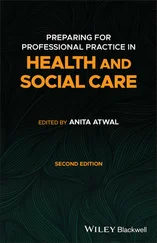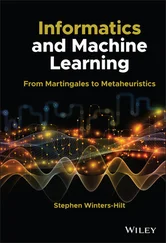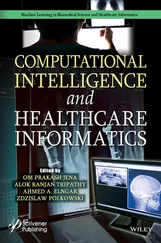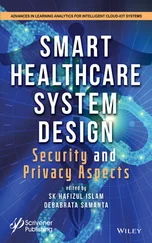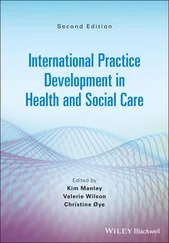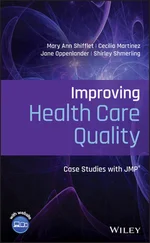Computer vision plays a substantial role in health care applications such as the diagnosis of diseases and planning for treatment. Brain tumors are severe conditions that may be deadly if not detected and treated early. In India, brain tumors occur in five to ten people per one lakh population (100 000 people). Deep learning is a category of artificial intelligence that does not require any human intervention to learn the features. Deep learning algorithms learn the features of images on their own and are capable of learning more complex features from the images. While characterizing the deep neural networks, the selection of optimizers plays a vital role. Optimizers are used to minimize the loss function by varying the weights and learning rate attributes of the neural network. Optimization algorithms are essential for producing more accurate results by reducing the loss function of the neural network. In Chapter 8, the authors have analyzed popular optimizers such as sgd, adam, rmsprop, adagrad, adadelta, adamax, and nadam used with artificial neural network systems in the proposed work. Two models, a simple artificial neural network (ANN) model and a convolutional neural network (CNN) model, have been considered. Each optimizer is executed with these two models to classify abnormal slices from magnetic resonance imaging (MRI) of human brain scans. The BraTS2013 and WBA data sets were used for training and testing the models. The accuracies of every model were recorded to analyse the optimizer's performance.
In Chapter 9, a machine learning approach is proposed to predict whether the given brain MRI scans are normal or abnormal. This prediction is needed for treatment planning and diagnosis. The proposed method makes use of the bilateral symmetric nature of the human brain by splitting it into the left and right hemispheres (LHS and RHS) to extract the feature differences between the hemispheres. A feature set of 763 x 39 dimensions are created as the input for the classification model. Among these 39 features, 16 were selected by the Pearson's correlation coefficient to have correlation value greater than 0.3. To train the model, six tumor volumes from the BraTS2013 and two normal volumes from the IBSR‐18 data sets were used. For testing the model, 11 tumor volumes from the BraTS2013 and two normal volumes from the IBSR‐18 data sets were used. The k‐nearest neighbourhood (KNN) model was trained using the training data and the prediction done on the test data. A stratified k‐fold cross‐validation was used to validate the proposed model. The proposed model was analysed in terms of false alarm (FA), missed alarm (MA), and accuracy (ACC) for performance. The results showed that the proposed model yielded a 98 and 95.6% accuracy on the validation and testing data, respectively.
Chapter 10draws a line of conclusion on the future aspects of healthcare informatics while stressing the need for the effective management of healthcare resources.
This volume will benefit several categories of students and researchers. At the student level, this volume can serve as a treatise/reference book for the special papers at the master's level aimed at inspiring future researchers. Newly inducted PhD aspirants would also find the contents of this volume useful as far as their compulsory coursework is concerned. At the researchers' level, those interested in interdisciplinary research would also benefit from the volume. After all, the enriched interdisciplinary contents of the volume will always be a subject of interest to the faculties, existing research communities, and new research aspirants from diverse disciplines of the concerned departments of premier institutes across the globe.
| Cooch Behar, India |
Sourav De |
| Ranchi, India |
Rik Das |
| Bengaluru, India |
Siddhartha Bhattacharyya |
| Kolkata, India |
Ujjwal Maulik |
| December, 2021 |
|
Dr. Sourav Decompleted his bachelor's in information technology at The University of Burdwan, Burdwan, India in 2002. He earned his master's in information technology from The West Bengal University of Technology, Kolkata, India in 2005. He completed his PhD in Computer Science and Technology at the Indian Institute of Engineering & Technology, Shibpur, Howrah, India in 2015. He is an Associate Professor in the Computer Science & Engineering Department at the Cooch Behar Government Engineering College, West Bengal. Before 2016, he was an Assistant Professor for more than ten years in the Department of Computer Science and Engineering and Information Technology of the University Institute of Technology, The University of Burdwan, Burdwan, India. He served as a Junior Programmer at the Apices Consultancy Private Limited, Kolkata, India in 2005. He is a co‐author of one book, the co‐editor of twelve books, and has more than 54 research publications in internationally reputed journals, international books, and international IEEE conference proceedings as well as five patents in his name. Dr. De has served as a reviewer for several international IEEE conferences and on several international editorial books. He has also served as a reviewer at reputed international journals such as Applied Soft Computing, Elsevier, BV, Knowledge‐Based Systems, Computer Methods in Biomechanics and Biomedical Engineering Imaging & Visualization, Inderscience Journals, etc. He has been a member of organizing and technical program committees for several national and international conferences and been invited to seminars as an expert speaker. His research interests include soft computing, pattern recognition, image processing, and data mining. Dr. De is a Senior member of IEEE and a member of the ACM, Institute of Engineers (IEI), Computer Science Teachers Association (CSTA), Institute of Engineers, and IAENG, Hong Kong. He is a life member of ISTE, India.
Dr. Rik Dasis an Assistant Professor in the Post Graduate Programme in Information Technology, at the Xavier Institute of Social Service, Ranchi. He has a PhD (Tech) in Information Technology from the University of Calcutta. He has also received his MTech (Information Technology) from the University of Calcutta after earning his BE (Information Technology) from the University of Burdwan. Dr. Das has over 16 years of experience in academia and research with several leading universities and institutes in India including the Narsee Monjee Institute of Management Studies (NMIMS) (Deemed‐to‐be‐University), Globsyn Business School, Maulana Abul Kalam Azad University of Technology, and so on. He had an early career stint in business development and project marketing with industries like Great Eastern Impex Pvt. Ltd. and Zenith Computers Ltd. Dr. Rik Das was appointed as a “Distinguished Speaker” by the Association of Computing Machinery (ACM) in July 2020. He was featured on the uLektz Wall of Fame as one of the “Top 50 Tech Savvy Academicians in Higher Education across India” for the year 2019. He is also a member of the International Advisory Committee of AI‐Forum, UK. Dr. Das was awarded a professional membership to the ACM for the year 2020‐21. In 2020, he was also the recipient of prestigious “InSc Research Excellence Award”. Dr. Das was conferred with the “Best Researcher Award” at the International Scientist Awards on Engineering, Science and Medicine for the year 2021. He is also the recipient of the 2021 “Best Innovation Award” in the Computer Science category of the UILA Awards. Dr. Das has conducted collaborative research with professionals from industries including Philips‐Canada, Cognizant Technology Solutions, and TCS. His keen interest toward the application of machine learning and deep learning techniques for designing computer‐aided diagnosis systems has resulted in joint research publications with professors and researchers from several universities abroad including the College of Medicine, University of Saskatchewan, Canada; Faculty of Electrical Engineering and Computer Science, VSB Technical University of Ostrava, Ostrava, Czechia; and Cairo University, Giza, Egypt.
Читать дальше
